当前位置:网站首页>Hypothesis testing -- learning notes of Chapter 8 of probability theory and mathematical statistics
Hypothesis testing -- learning notes of Chapter 8 of probability theory and mathematical statistics
2022-07-05 04:23:00 【IOT classmate Huang】
Hypothesis testing ——《 Probability theory and mathematical statistics 》 Chapter VIII study notes
List of articles
Preface
Thanks to typhoon siemba , Let me not go back to the dormitory , Forced to spend the night in the Laboratory , reasoning , Cannot sleep! , Just as the final exam is approaching , Decided to write a study note of Chapter 8 .
Just like the previous series , Teaching materials remain unchanged . Content , Select the first three sections of Chapter 8 , Hypothesis testing , Normal mean , Knowledge points of three parts of normal variance , Why is there nothing else , Because I probably won't take this exam .
Formally , Compared with the previous chapters, many textbook definitions are written , This time I will have more personal understanding , Try to hit the test site directly .
MindMap
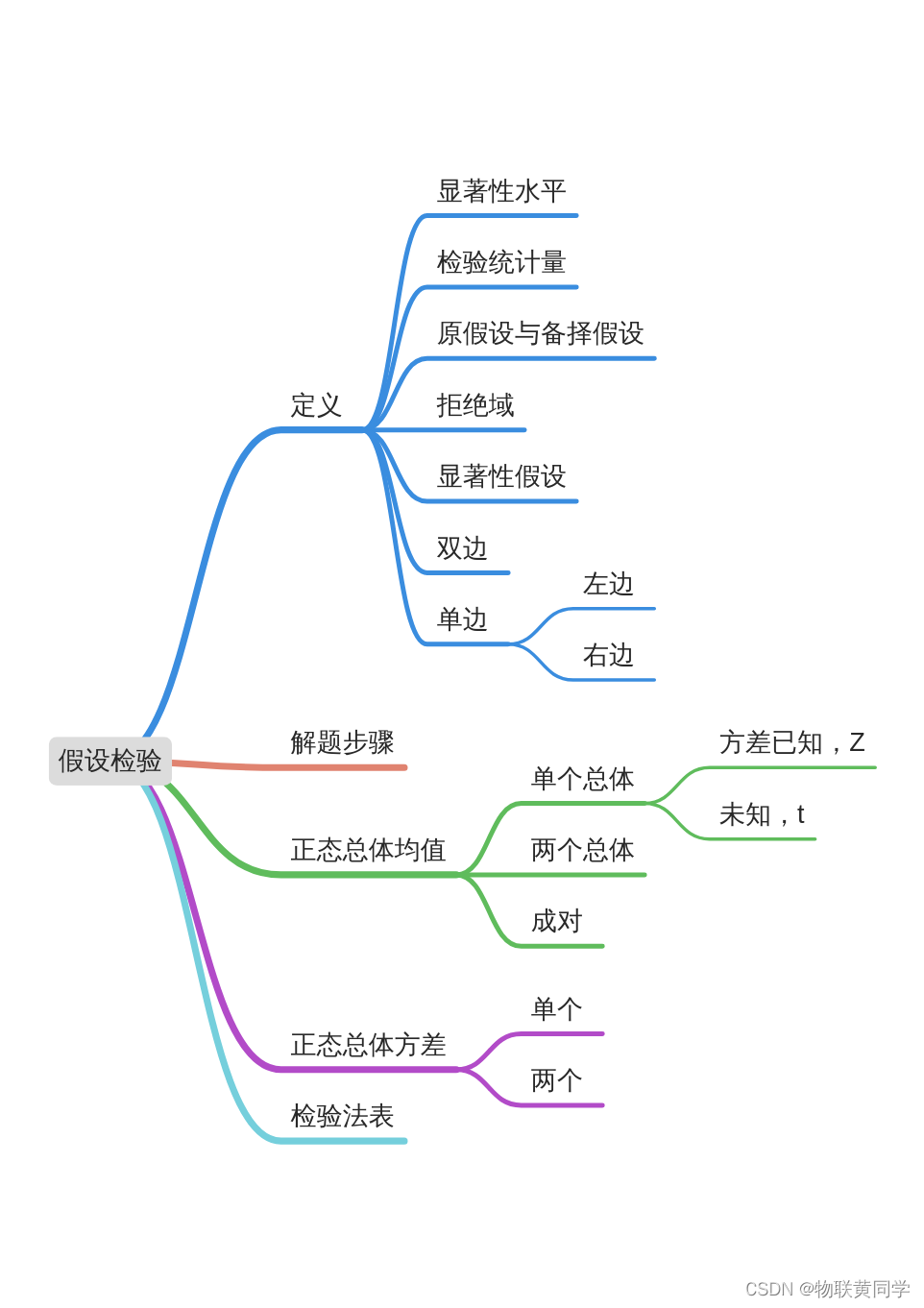
Hypothesis testing
This section actually tells you some definitions of hypothesis testing , And the process and steps of solving the problem of hypothesis testing .
Some definitions
Significance level
The standard we use to measure the inspection , Generally, in the formula α appear .
Test statistic
Z = X ‾ − μ 0 σ / n Z = \frac{\overline{X} - \mu_0}{\sigma/\sqrt n} Z=σ/nX−μ0
The null hypothesis And The alternative hypothesis
We describe the inspection problem as : At the level of significance α Next , Test the hypothesis :
H 0 : μ = μ 0 , H 1 : μ ≠ μ 0 H_0:\mu =\mu_0, \qquad H_1 : \mu \neq \mu_0 H0:μ=μ0,H1:μ=μ0
H0 by The null hypothesis , H1 by The alternative hypothesis .
Reject domain
Is to take a value in a certain area as When testing the value of Statistics , Refuse The null hypothesis , Or accept the alternative hypothesis , This region is the rejection domain , The boundary point of the rejection domain is actually called critical point .
Significance test
Because the test is based on samples , So the test is bound to make mistakes , There are two main mistakes :
- H0 It's true , But refuse .
- H1 It's true , But accept the original hypothesis .
We obviously hope that the probability of making these two kinds of mistakes is small , But in mathematical statistics , If the sample size is limited , While reducing the probability of making a kind of mistake , The probability of the other kind tends to increase . So in mathematical statistics , The first kind of control is adopted , Don't consider The second category . This test is Hypothesis testing .
Bilateral inspection and unilateral inspection
This is actually when we are making assumptions , about H1,μ May be greater than μ0, It may be less than μ0, If it is both possible , That's it Bilateral assumptions , And if it's just one possibility , That's it Unilateral assumptions , According to the direction, it can be divided into Check on the left and Check on the right . For direction , My personal understanding is to see Reject the domain or choose the assumed direction .
Problem solving steps for personal understanding
Through reading and understanding textbook examples , Found the solution process of hypothesis testing problem :
- First, determine the test hypothesis according to the topic .
- Determine the test statistics according to the parameters .
- Then judge the hypothesis according to the hypothesis and test statistics , Then determine the reject domain .
- sampling , In fact, it is to judge whether to accept the original hypothesis according to the observed value of the sample .
All the populations in this article are normal populations , For its two parameters , mean value μ And variance σ^2, There are two hypothesis tests .
Hypothesis test of normal population mean
Single population
Here, according to whether the variance is known , Can be divided into Z test and t test .
The variance is known ,Z test
It's very simple , According to the hypothesis, we need to test whether the sample mean meets the hypothesis , At the level of significance α And other parameters , The test statistic is :
Z = X ‾ − μ 0 σ / n Z ∼ N ( μ , σ 2 ) Z = \frac{\overline{X} - \mu_0}{\sigma/\sqrt n} \\ Z \sim N(\mu, \sigma^2) Z=σ/nX−μ0Z∼N(μ,σ2)
Next, we only need to solve it according to whether it is unilateral hypothesis or bilateral hypothesis .
Take two sides α/2, The absolute value of the test statistic is higher than Corresponding to the significance level The normal function value rejects the original assumption .
The variance is unknown ,t test
This is actually Sample variance is used s To approximate replacement Total variance σ, Of course, we need to use t Distribution .
X ‾ − μ 0 S / n ∼ t ( n − 1 ) \frac{\overline{X} - \mu_0}{S/\sqrt n} \sim t(n-1) S/nX−μ0∼t(n−1)
Two overall ——t test
For two independent normal populations
N ( μ 1 , σ 2 ) , N ( μ 2 , σ 2 ) N(\mu_1, \sigma^2), N(\mu_2, \sigma^2) N(μ1,σ2),N(μ2,σ2)
The variance is the same , The mean is different , So we can eliminate the test hypothesis :
H 0 : μ 1 − μ 2 = δ , H 1 : μ 1 − μ 2 ≠ δ H_0: \mu_1 - \mu_2 = \delta, \quad H_1:\mu_1 - \mu_2 \neq \delta H0:μ1−μ2=δ,H1:μ1−μ2=δ
So give the test statistics :
t = ( X ‾ − Y ‾ ) − δ S w 1 n 1 + 1 n 2 S w 2 = ( n 1 − 1 ) S 1 2 + ( n 2 − 1 ) S 2 2 n 1 n 2 − 2 t= \frac{(\overline{X} - \overline{Y})- \delta}{S_w\sqrt{\frac1{n_1} + \frac 1{n_2}}} \\ S_w^2 = \frac{(n_1 - 1)S_1^2 + (n_2 - 1)S^2_2}{n_1 n_2 - 2} t=Swn11+n21(X−Y)−δSw2=n1n2−2(n1−1)S12+(n2−1)S22
Test of paired data ——t test
In fact, here is to compare the two groups of data to find the difference , Then do the test , We usually subtract the data directly as a new normal population sample , The next step is actually a single overall situation .
Hypothesis test of normal population variance
Single population
In the mean , So here's what we're going to use Z and t test , To put it bluntly, it means using Normal distribution and t Distribution , But in the hypothesis test of variance , In fact, it uses
( n − 1 ) S 2 σ 0 2 ∼ χ 2 ( n − 1 ) \frac{(n-1)S^2}{\sigma_0^2} \sim \chi^2(n - 1) σ02(n−1)S2∼χ2(n−1)
Two overall
What is used is F Distribution
S 1 2 / S 2 2 σ 1 2 / σ 2 2 ∼ F ( n 1 − 1 , n 2 − 1 ) \frac{S_1^2/ S_2^2}{\sigma_1^2/ \sigma_2^2} \sim F(n_1-1, n_2 -1) σ12/σ22S12/S22∼F(n1−1,n2−1)
Test method table of normal population
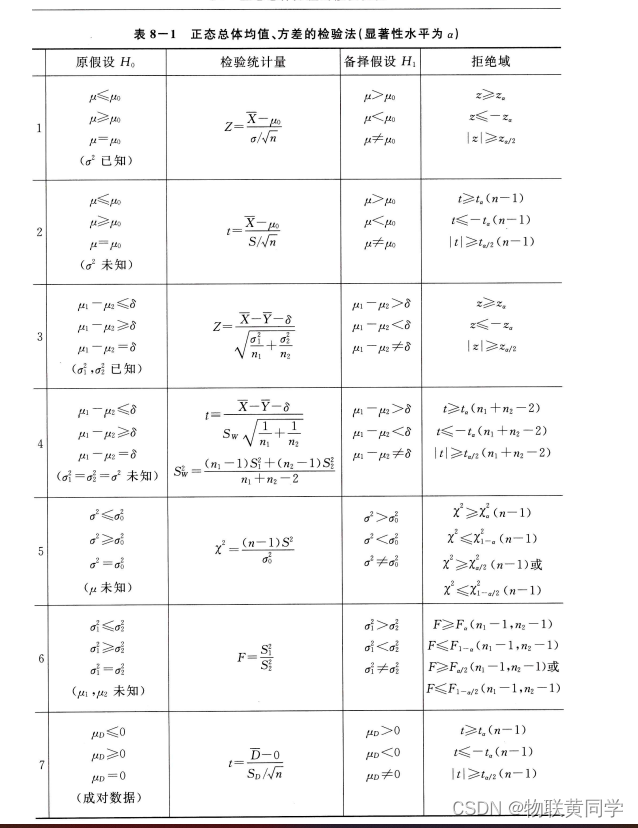
The latter
It's dawn , Go back to bed , This chapter will be better read in combination with the textbook .
边栏推荐
- Judge whether the stack order is reasonable according to the stack order
- WGS84 coordinate system, web Mercator, gcj02 coordinate system, bd09 coordinate system - brief introduction to common coordinate systems
- This is an age of uncertainty
- Sword finger offer 04 Search in two-dimensional array
- What is the reason why the webrtc protocol video cannot be played on the easycvr platform?
- [uniapp] system hot update implementation ideas
- Threejs rendering obj+mtl model source code, 3D factory model
- 首席信息官如何利用业务分析构建业务价值?
- 指针函数(基础)
- Hexadecimal to octal
猜你喜欢
![[phantom engine UE] package error appears! Solutions to findpin errors](/img/d5/6747e20da6a8a4ca461094bd27bbf0.png)
[phantom engine UE] package error appears! Solutions to findpin errors
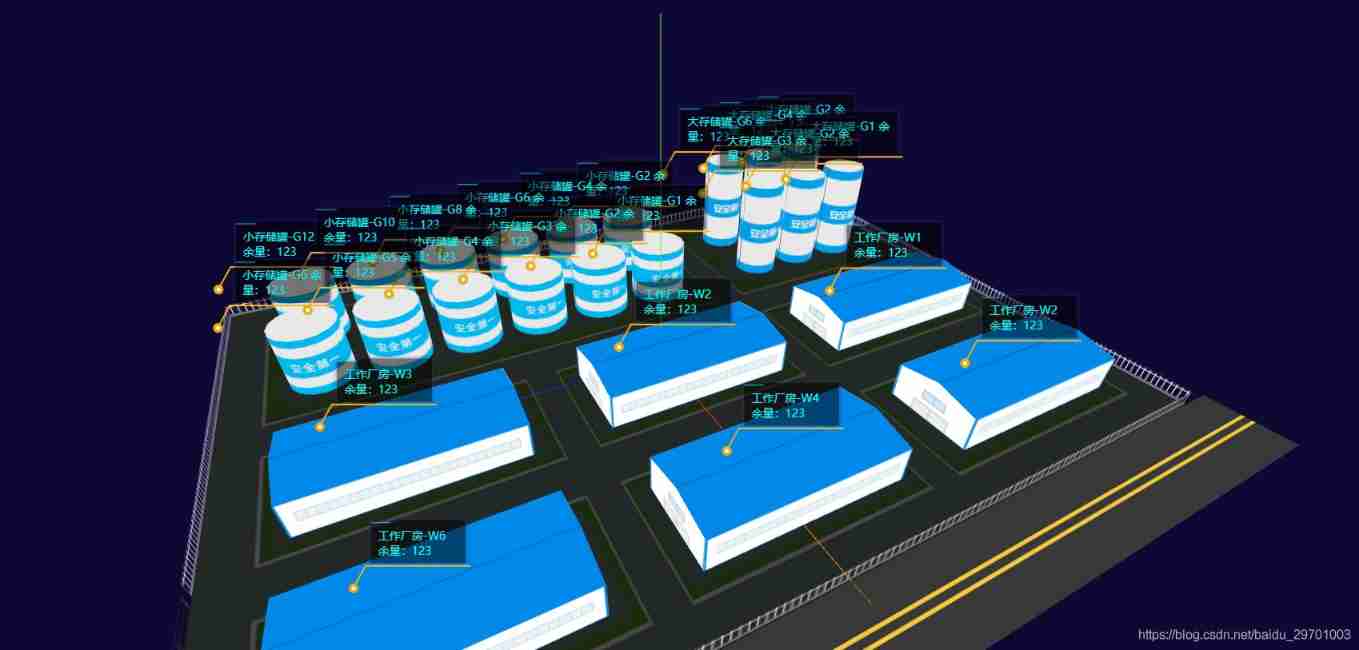
Threejs implements labels and displays labels with custom styles
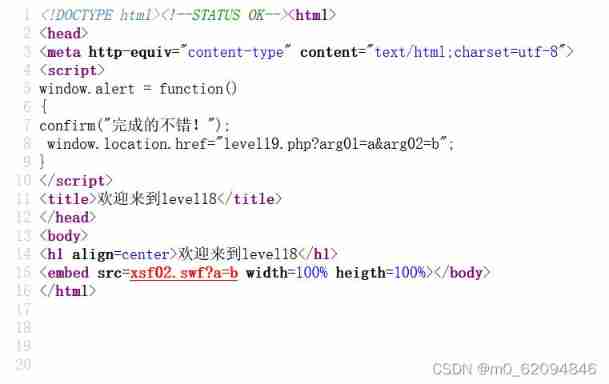
level18

About the prompt loading after appscan is opened: guilogic, it keeps loading and gets stuck. My personal solution. (it may be the first solution available in the whole network at present)
![[uniapp] system hot update implementation ideas](/img/1e/77ee9d9f0e08fa2a7734a54e0c5020.png)
[uniapp] system hot update implementation ideas
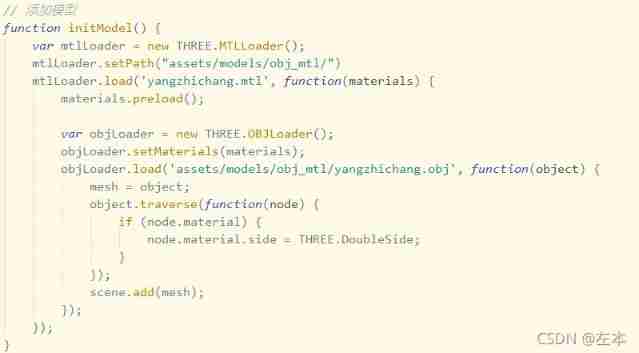
Threejs Internet of things, 3D visualization of farms (II)

【UNIAPP】系统热更新实现思路

Looking back on 2021, looking forward to 2022 | a year between CSDN and me
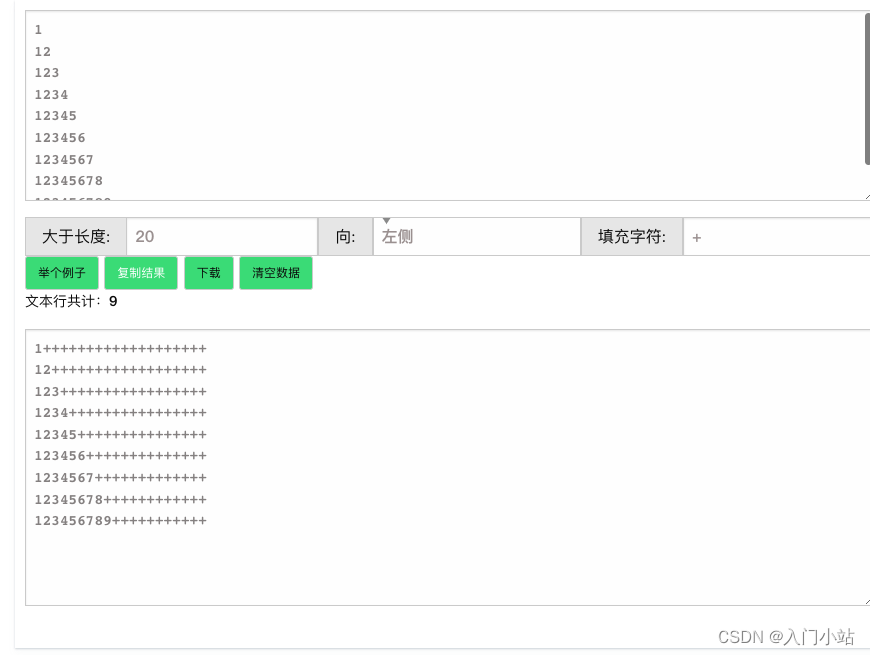
Online text line fixed length fill tool
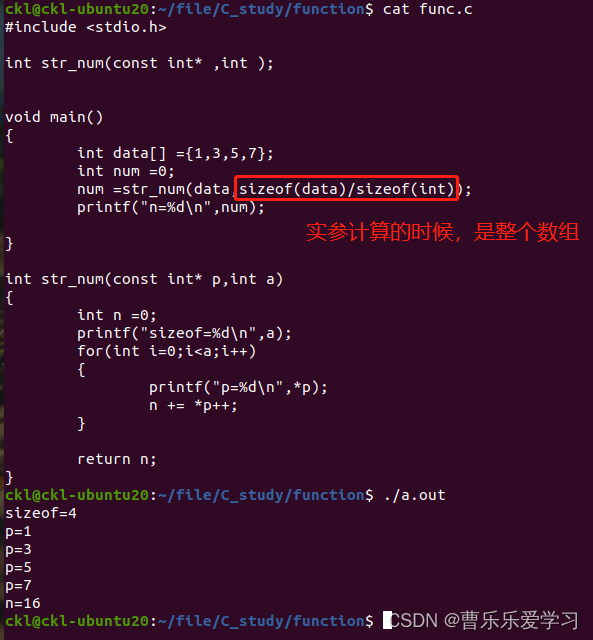
Function (error prone)
随机推荐
陇原战“疫“2021网络安全大赛 Web EasyJaba
直播預告 | 容器服務 ACK 彈性預測最佳實踐
[popular science] basic knowledge of thermal design: heat dissipation analysis of 5g optical devices
How to realize real-time audio and video chat function
The scale of computing power in China ranks second in the world: computing is leaping forward in Intelligent Computing
Use threejs to create geometry, dynamically add geometry, delete geometry, and add coordinate axes
Threejs loads the city obj model, loads the character gltf model, and tweetjs realizes the movement of characters according to the planned route
User behavior collection platform
Threejs Internet of things, 3D visualization of farm (III) model display, track controller setting, model moving along the route, model adding frame, custom style display label, click the model to obt
【科普】热设计基础知识:5G光器件之散热分析
Looking back on 2021, looking forward to 2022 | a year between CSDN and me
【虚幻引擎UE】实现背景模糊下近景旋转操作物体的方法及踩坑记录
网络安全-记录web漏洞修复
Online sql to excel (xls/xlsx) tool
程序员应该怎么学数学
Basic analysis of IIC SPI protocol
A application wakes up B should be a fast method
level17
Convert Boolean to integer value PHP - Convert Boolean to integer value PHP
Introduction to RT thread kernel (5) -- memory management